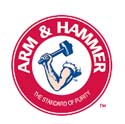
Inconsistent silage is a frustrating challenge dairy producers face. Whether it’s due to rain pattern variability or periods of hot, dry days, inconsistent silage happens, and it’s necessary to be realistic about the threat it poses to your cows’ health and productivity.
When weather patterns or other factors impact fields, they negatively impact everything down the line — from harvesting and fermentation to the ultimate feed quality. Specifically, feed tends to be drier and higher in fiber, creating digestibility and feed intake issues.
And that’s just the tip of the iceberg — inconsistent silage also means a greater threat from mycotoxins. Just how big — and costly — is this problem? Studies show that three out of every four ration ingredients globally are contaminated by one or more mycotoxin. In the U.S. alone, researchers estimate that three mycotoxins — aflatoxins, fumonisins, and deoxynivalenol — cost U.S. livestock producers $900 million every year.
In the face of so much variability in silage quality, how can you stay ahead of issues before they become full-blown problems? What can you do to ensure what you feed your animals always meets the quality and safety standards you need? How can you avoid adverse consequences on cow health and milk production?
If you could know for certain that every feed source you choose is mycotoxin-free, you could put your mind at ease. But that’s not a realistic undertaking. Marking bags to identify the source is impractical for many producers who prefer piles or bunkers, and not much is gained by testing for mycotoxins since it’s more than likely confirming what you know is already there.
But there is some good news. Mitigating the negative impact of inconsistent silage isn’t impossible. There are innovative ways to mitigate risks that go beyond simply testing feed quality or other traditional approaches.
For example, consider the advantages of the Refined Functional Carbohydrates™ (RFCs™) found in innovative products like CELMANAX™ and BG-MAX™. Adding RFCs to the ration can help your cows take on mycotoxins and win — regardless of the feed source — using a Prevent, Protect, and Resilience (PPR) approach.
PPR is a unique, three-step process that helps animals take on multiple mycotoxin challenges encountered every day.
• PREVENT. In vitro studies have demonstrated that RFCs can prevent gut cytotoxicity caused by a variety of mycotoxins, as well as forage extracts containing them.
• PROTECT. RFCs efficiently bound some of the most common mycotoxins in recent research.
• RESILIENCE. Commercial research and university trials in animals show that RFCs prevent toxins from becoming systemic and reaching milk and different organs, restore immunity, and maintain reproductive health and growth even during a mycotoxin challenge.
With RFCs, you get a win-win situation. You can give your cows the edge that they need to take on mycotoxins and with less time and resources being directed at feed, you can dedicate more time on other ways to optimize your productivity.
*Research available upon request.
